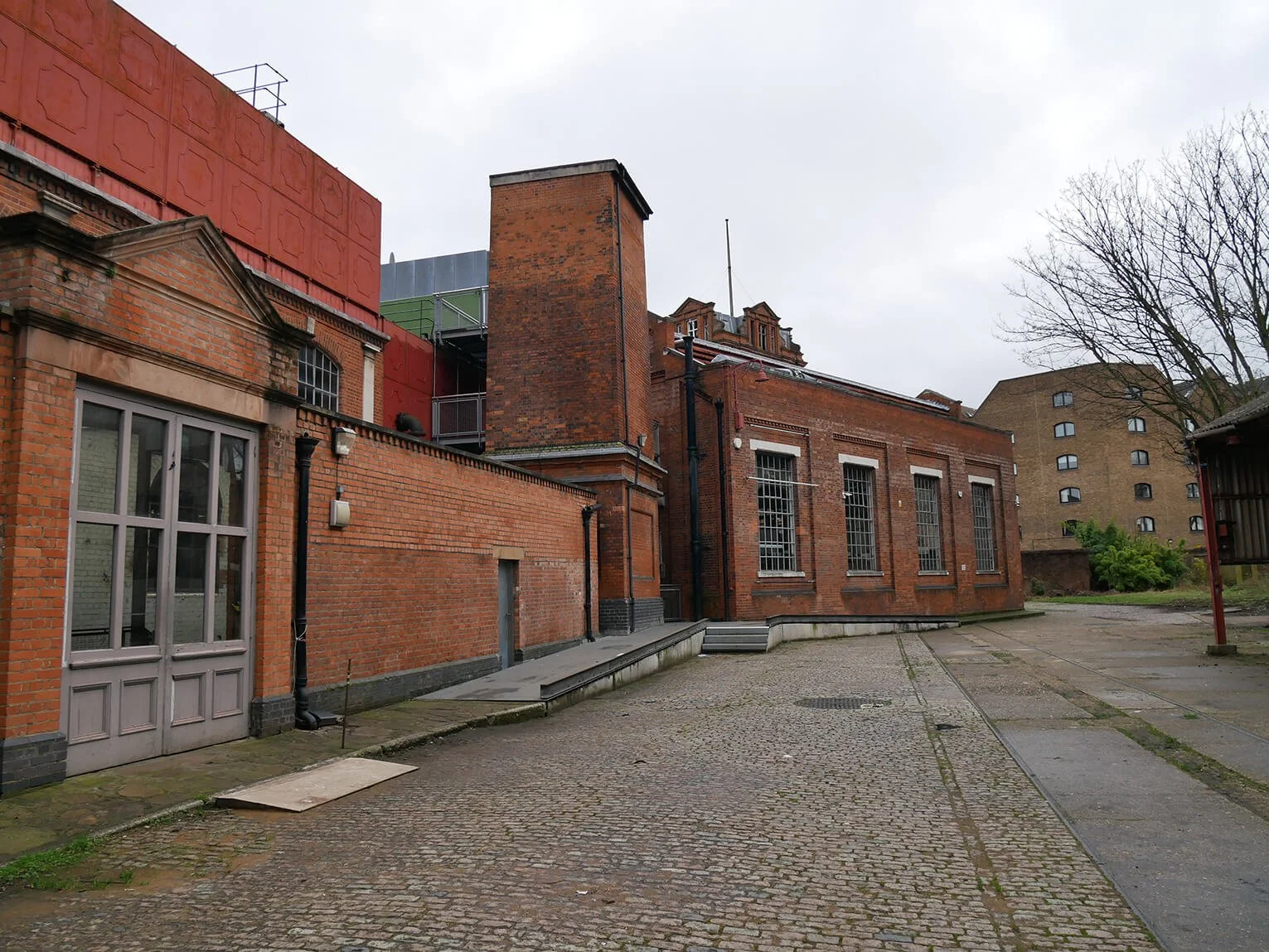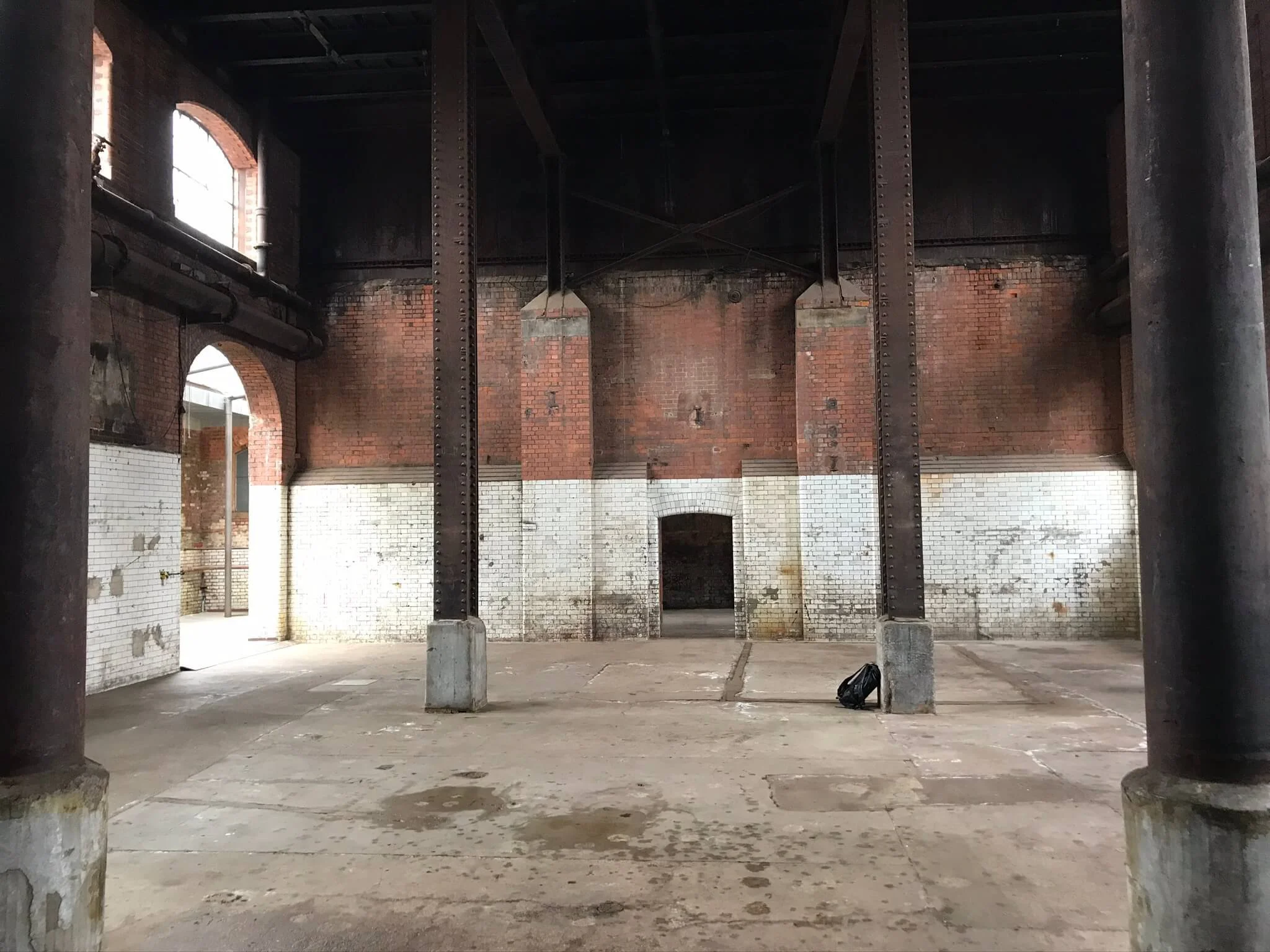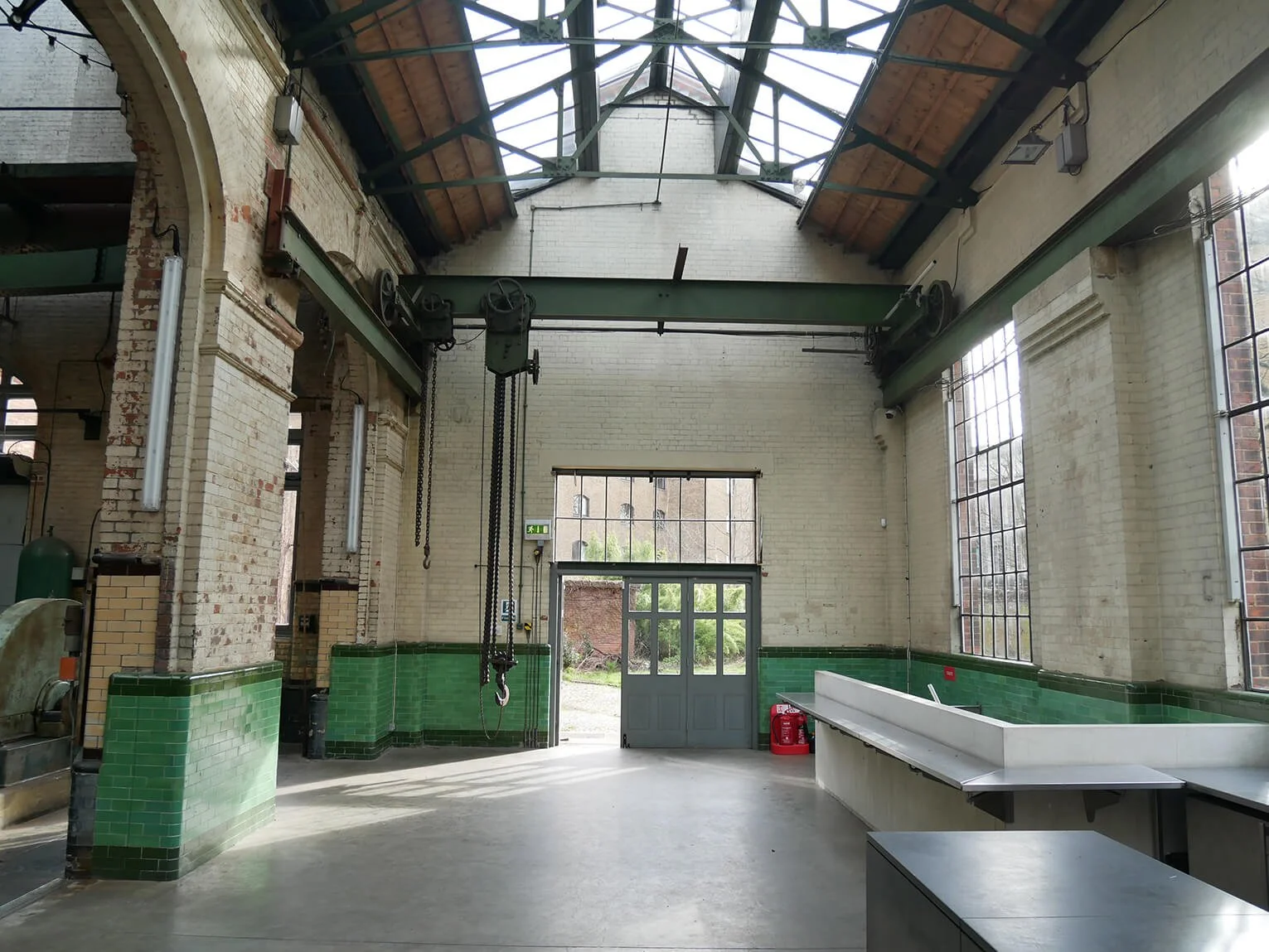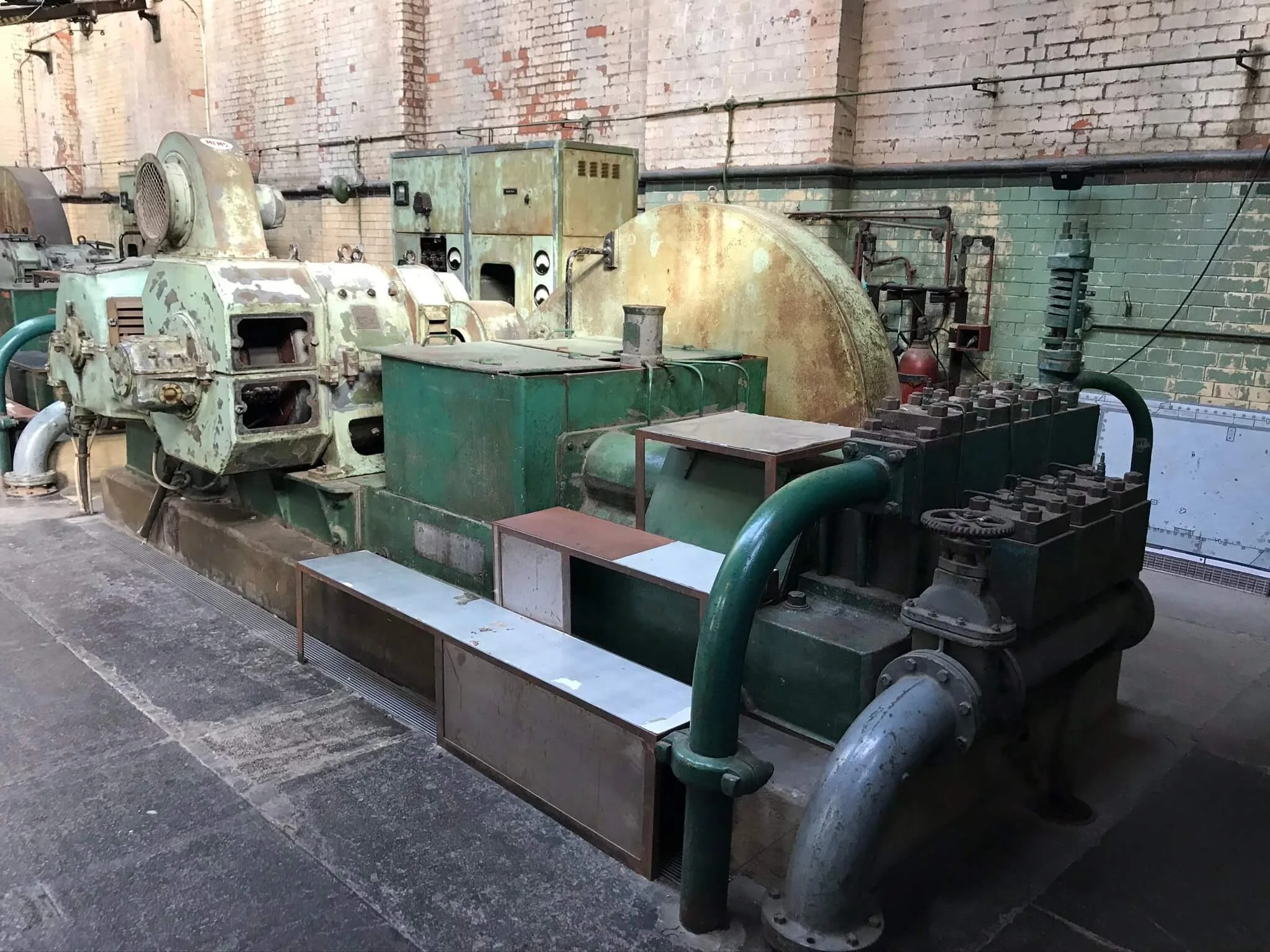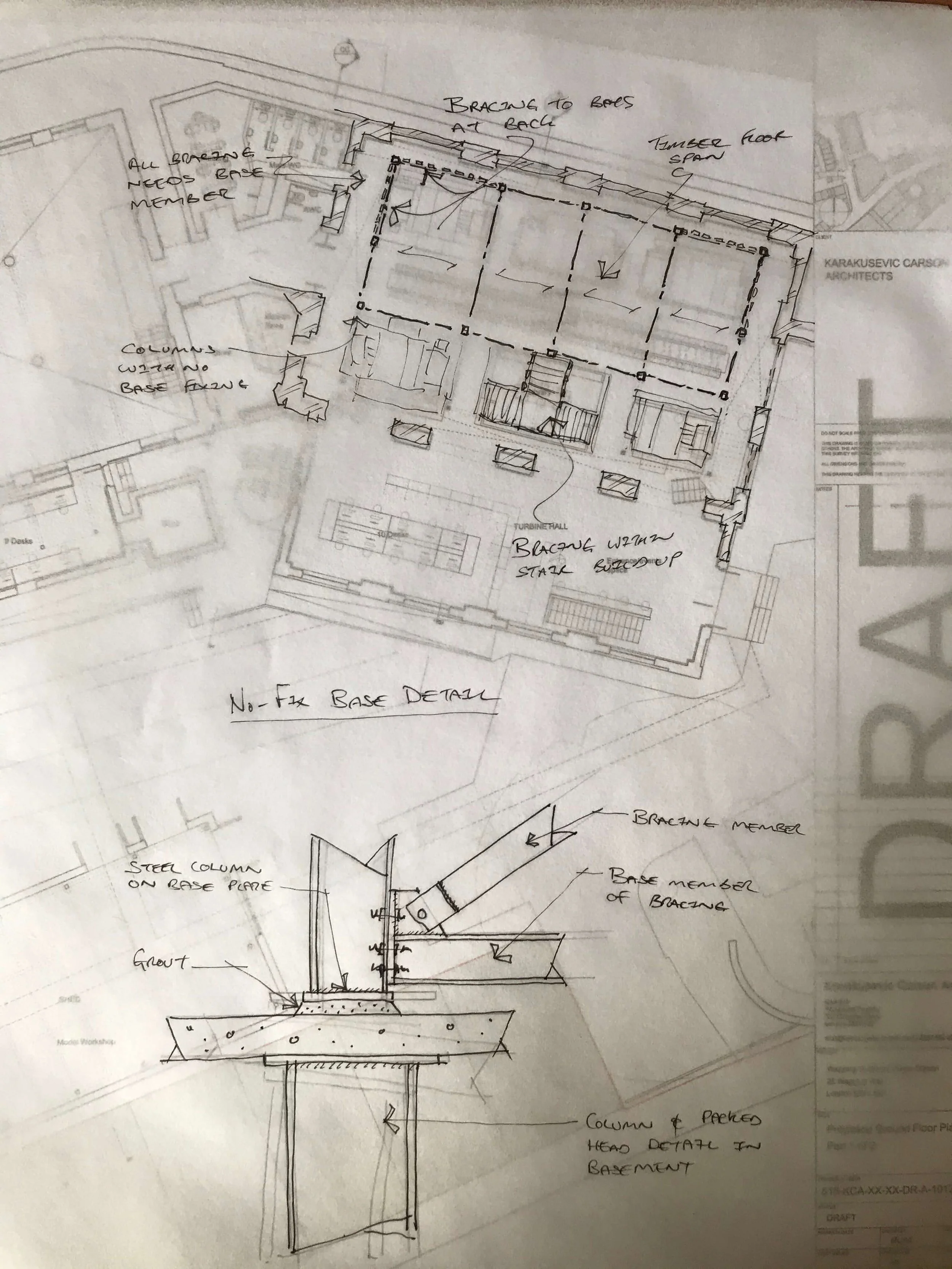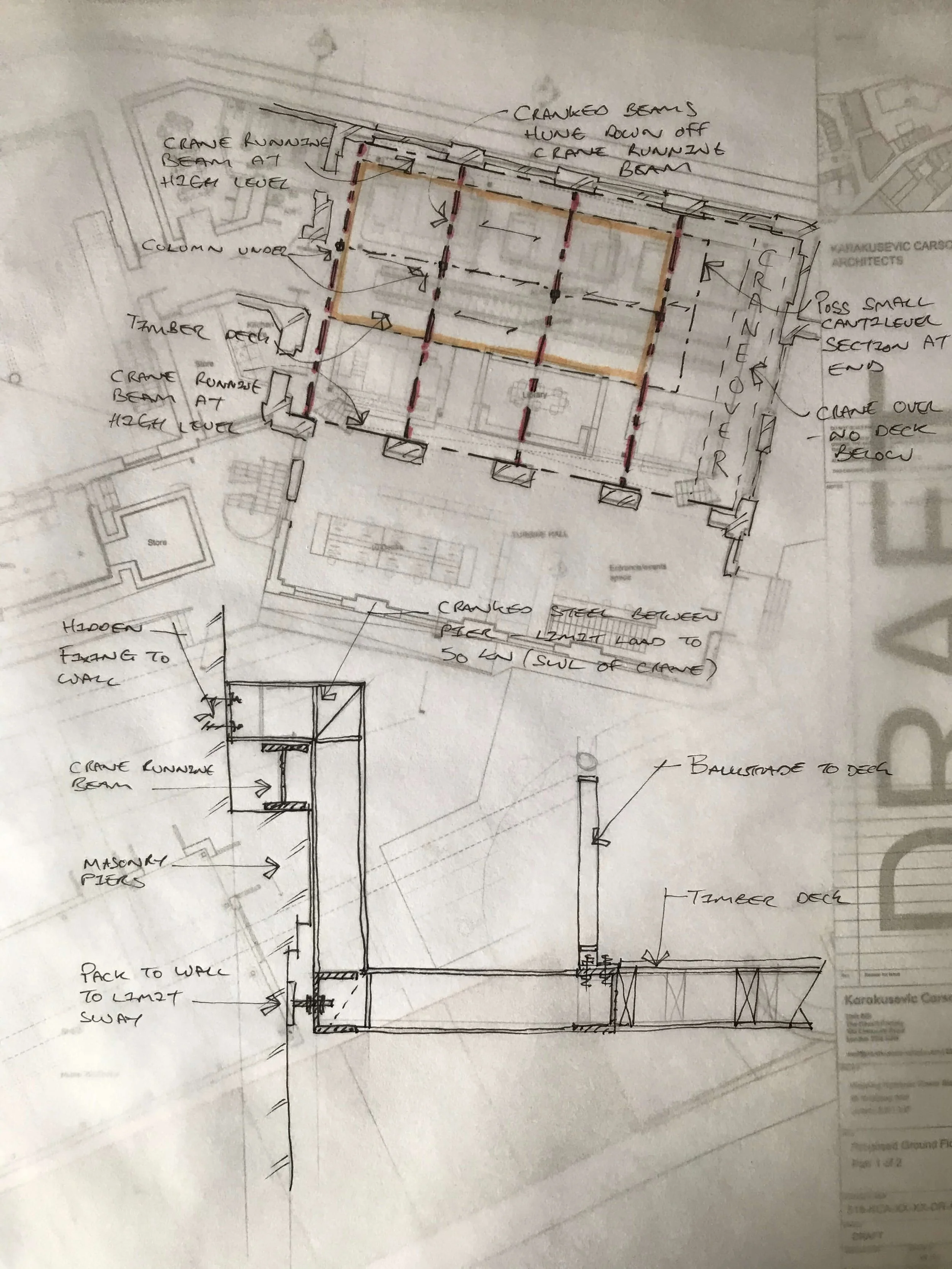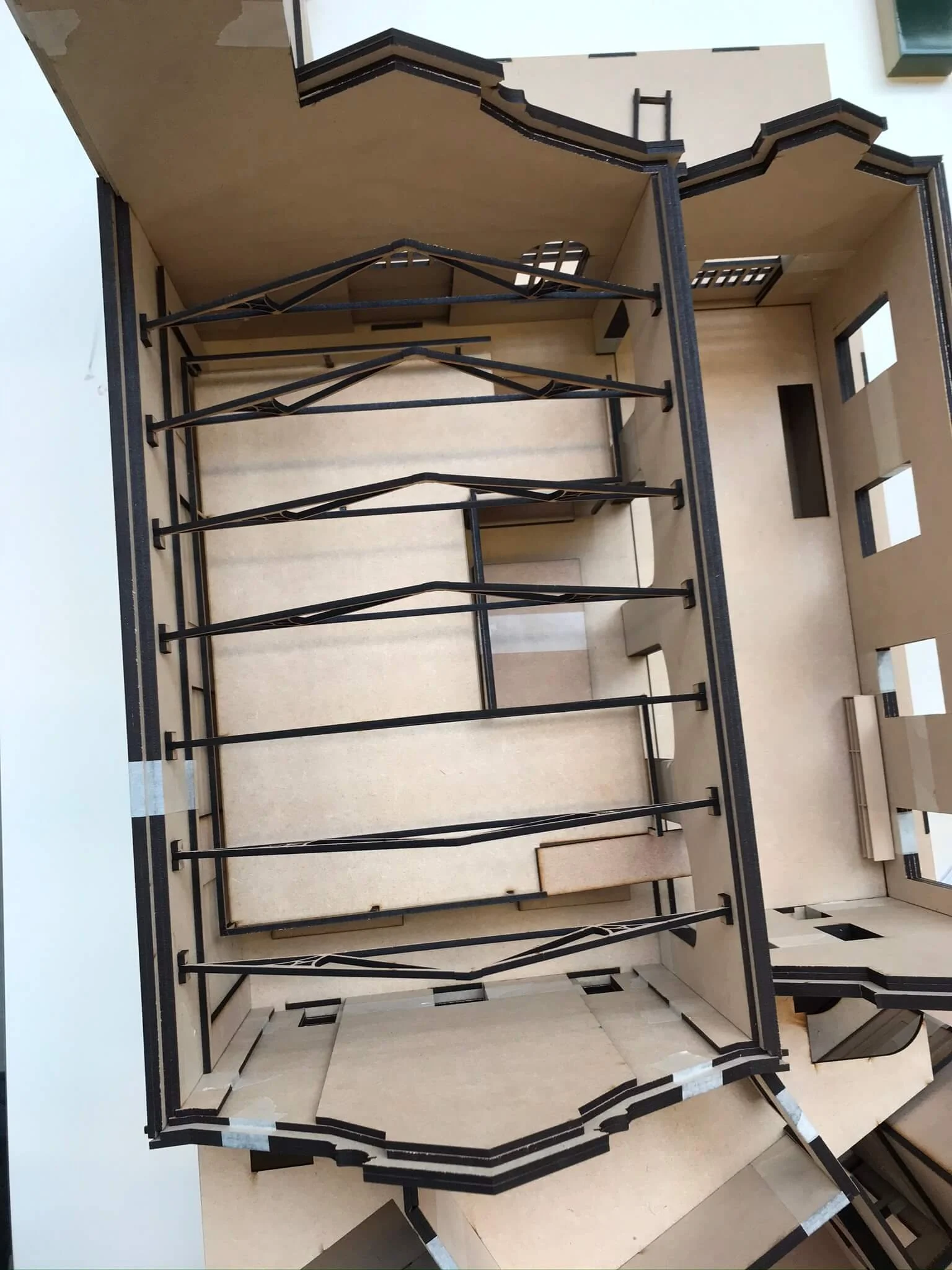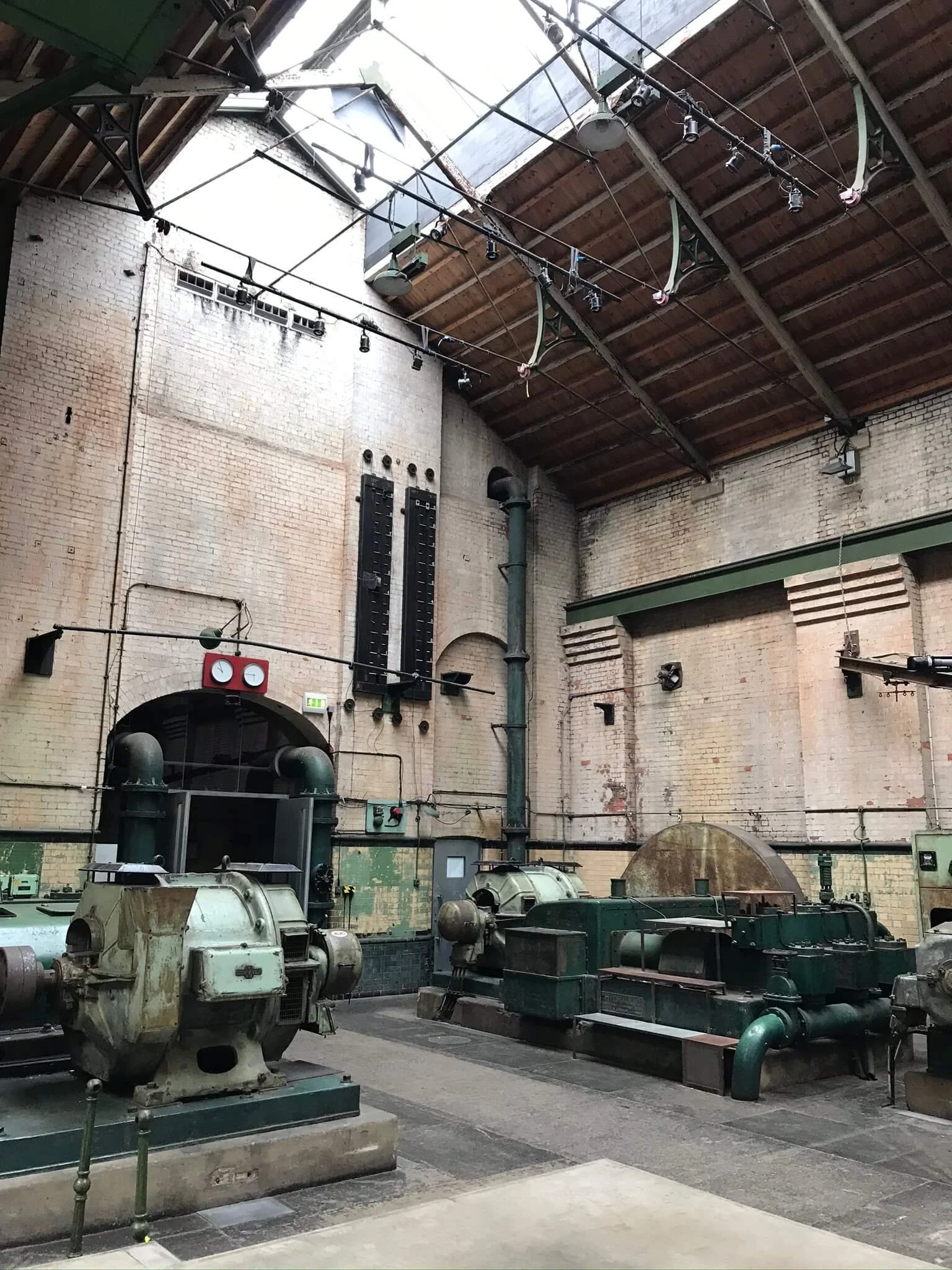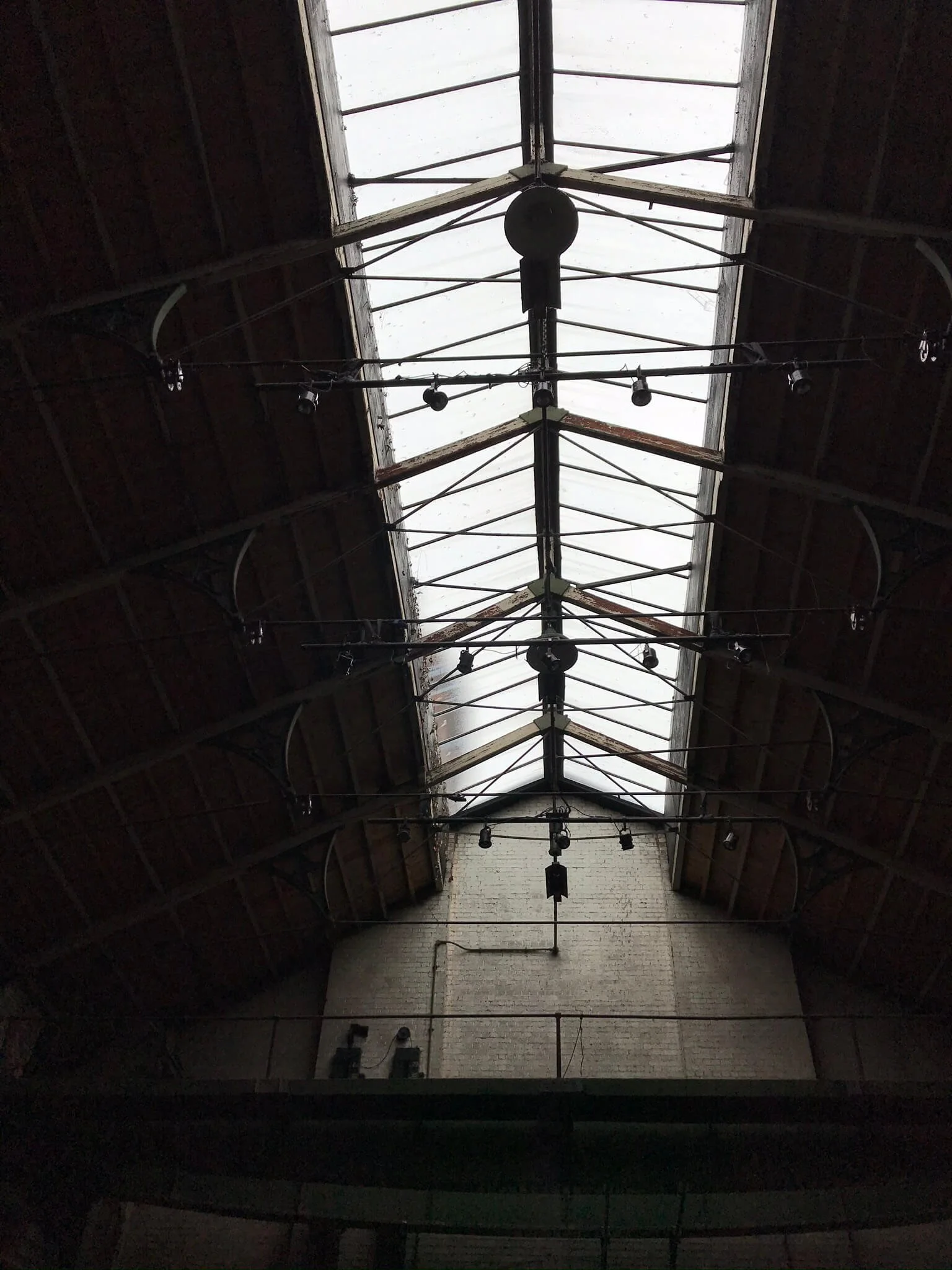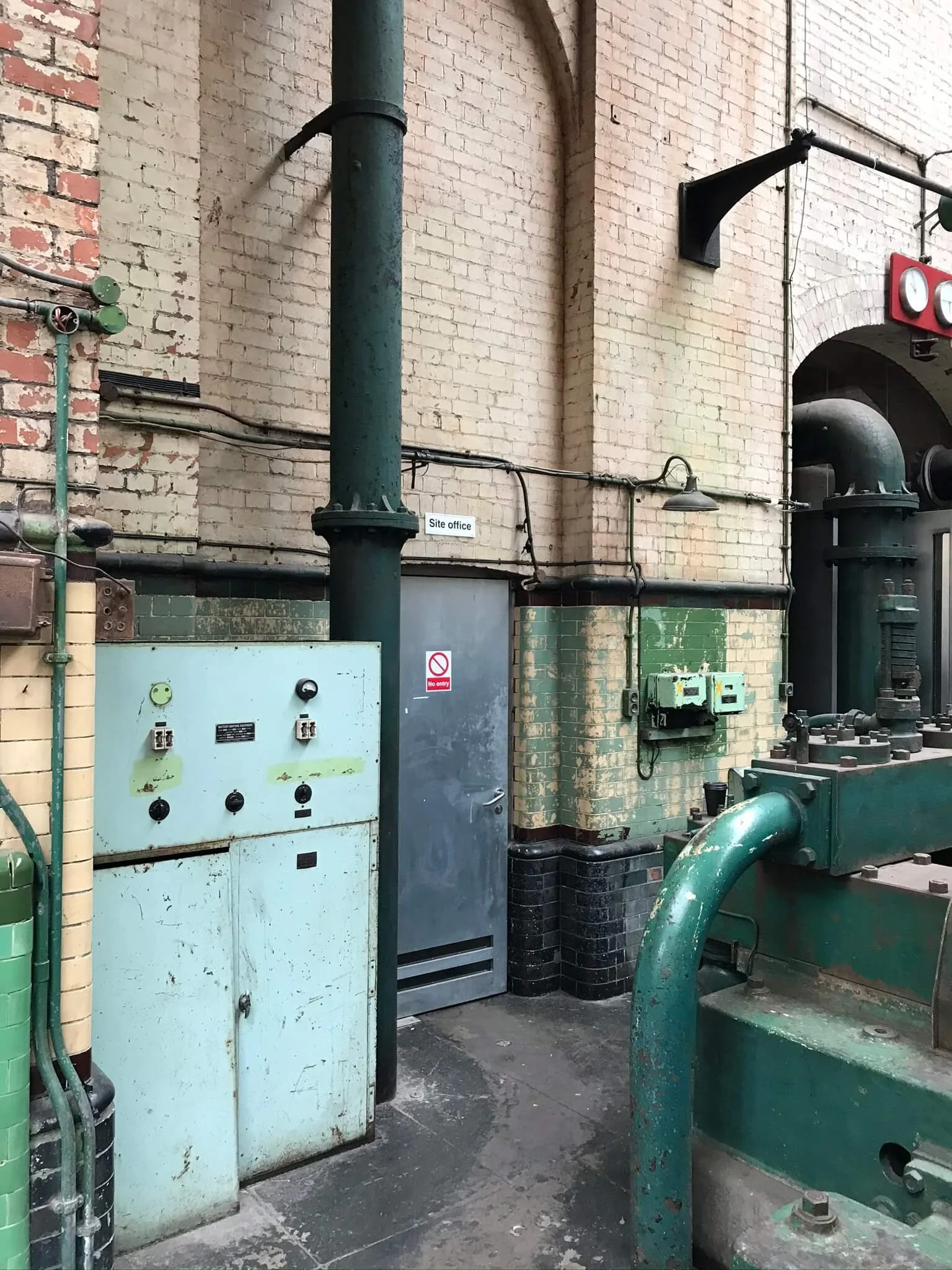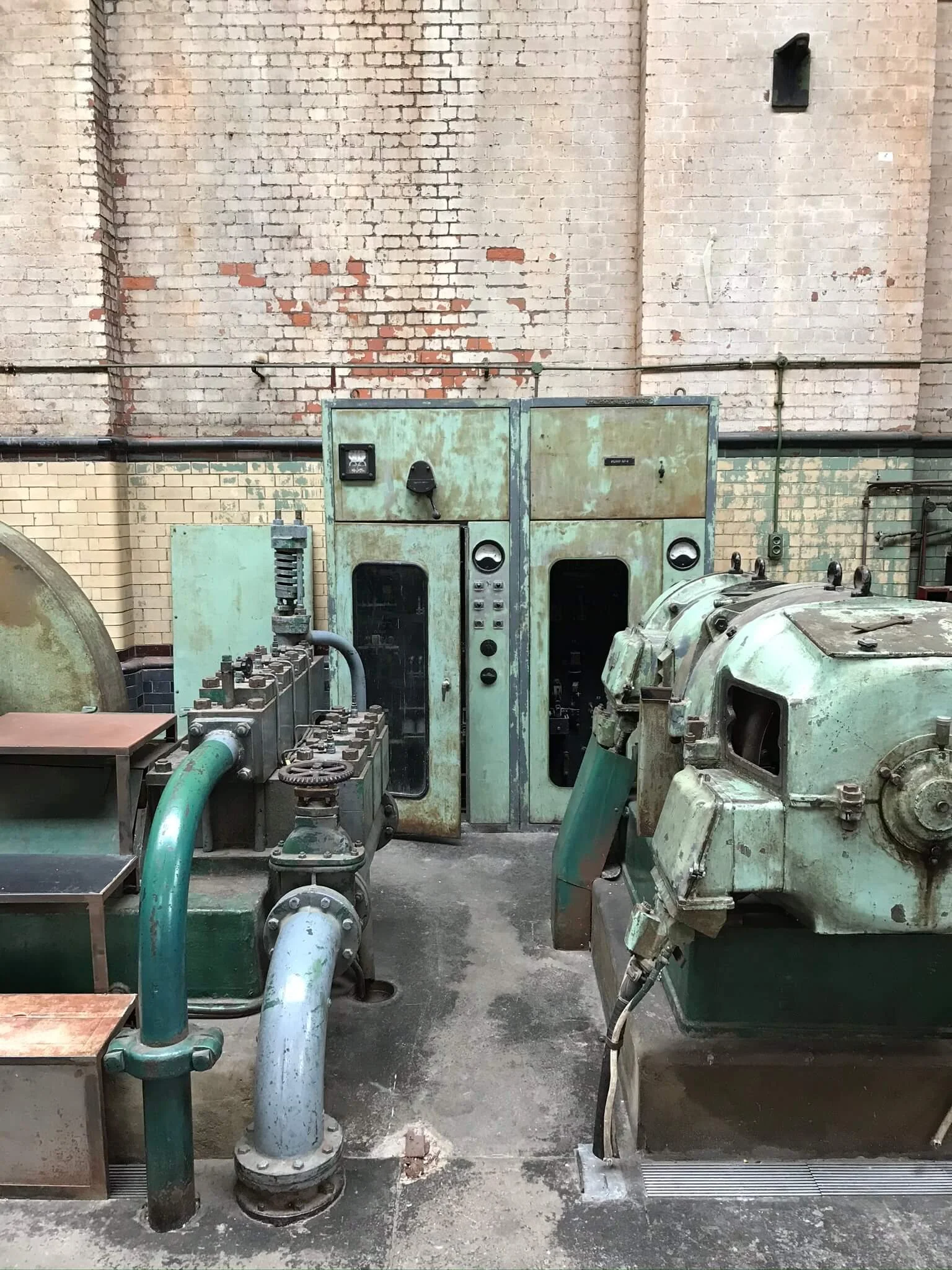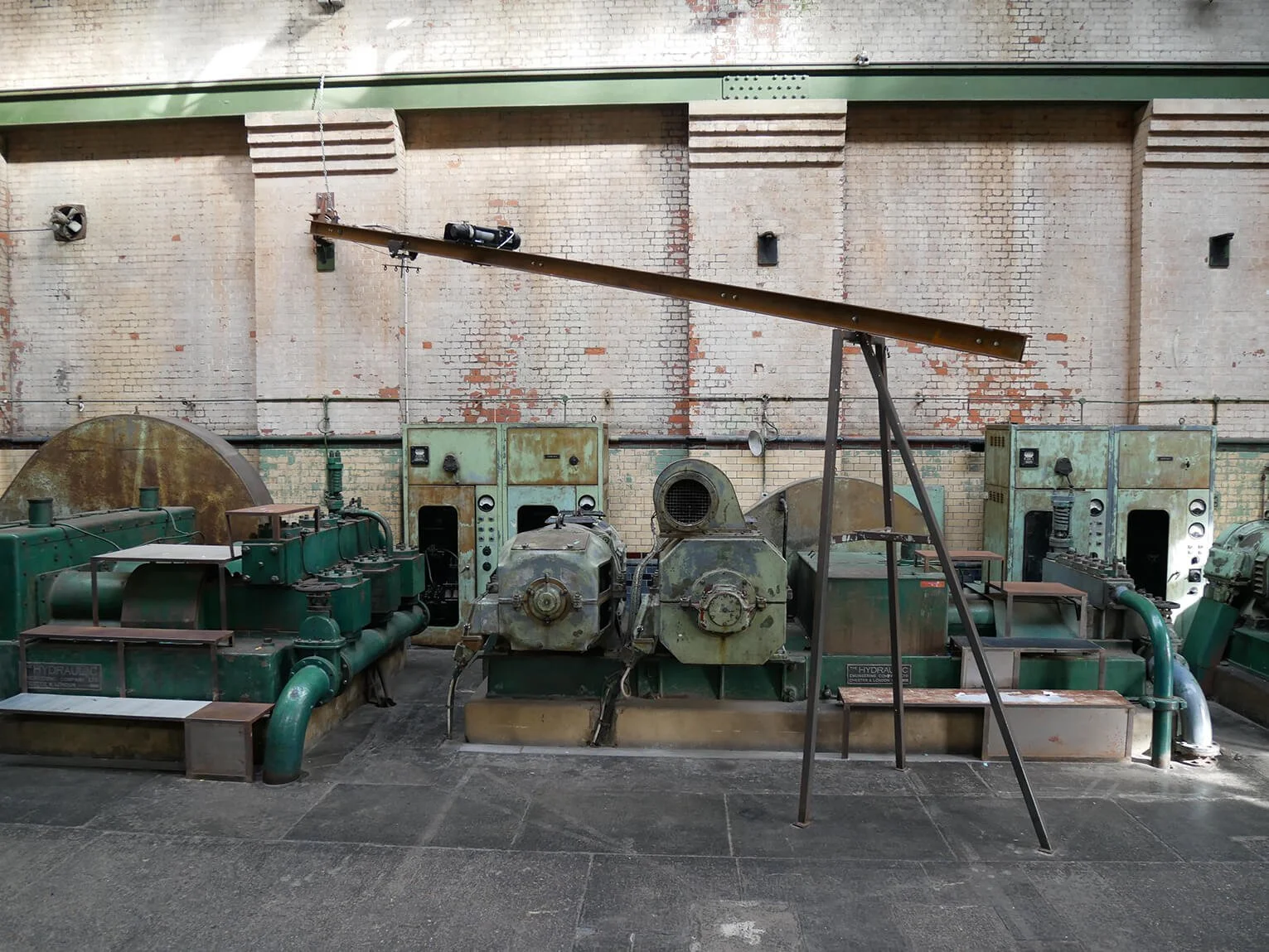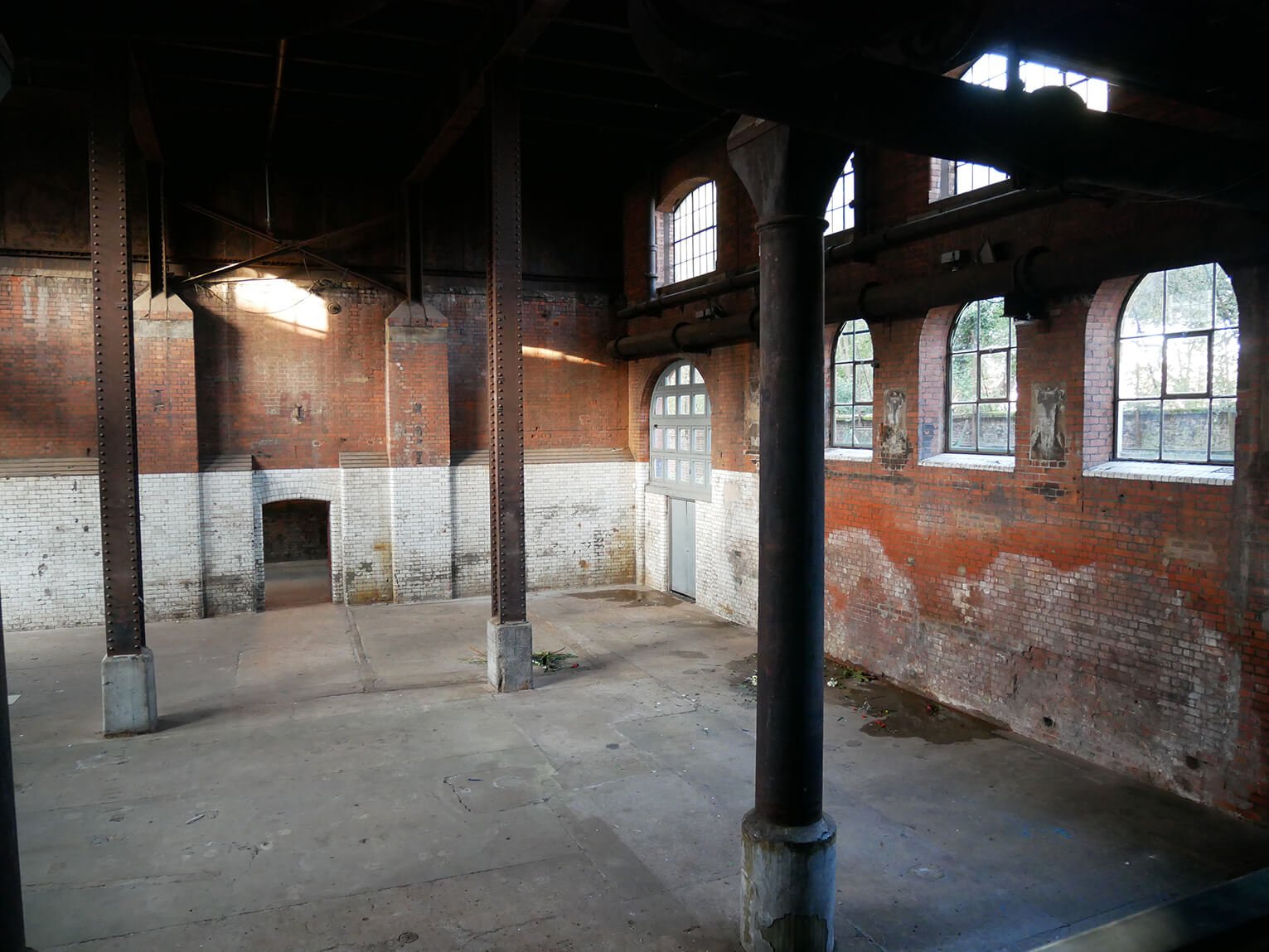Wapping Hydraulic Power Station
Careful Design & Analysis to Return a Unique Piece of Industrial Heritage to Daily Use
Architect: Confidential
Budget: Confidential
Unrealised
This study looked to move an architectural practice into the Grade II* listed Wapping Hydraulic Power Station.
The scheme involved the building of mezzanines in the engine house, making use of the existing crane gantries. This approach would have reduced the impact on the delicate floor and undercroft below, where significant amounts of existing plant is still housed. Careful assessment of the existing gantries as well as the listed removable floor panels was carried out to find a fully reversible solution that would have least impact on the existing building.
Internal refurbishments and repairs of the building were also detailed, as were plans for a small flat within the Accumulator Tower.
A new build timber model shop would have sat externally, above the underground reservoirs, framed in lightweight timber and clad in polycarbonate.
Wapping Hydraulic Power Station was a pioneering facility that provided hydraulic power for the industrial and commercial development of the East End of London in the late 19th and early 20th centuries.
The station was designed by Thomas Hawksley, an eminent engineer who was also responsible for many of the water supply and drainage systems in Victorian Britain. It was built in 1890 on the north bank of the River Thames in Wapping, and operated until 1977.
The power station was driven by a large steam engine, which pumped water from the river into a high-pressure hydraulic system. The hydraulic power was then distributed to various factories, docks, and warehouses in the area via a network of pipes and valves. The system was particularly useful for powering heavy machinery, including Tower Bridge, Lifts, cranes, and helped to transform the local economy.
The building features a distinctive red brick façade and a tall chimney, and was one of the first industrial structures to be built in a neo-Gothic style. The interior of the station was similarly impressive, with ornate ironwork and polished brass fittings.
The building complex still contains the engine house, boiler house, water tanks, accumulator tower, reservoir and boiler master's house. Within the buildings, a large amount of the original equipment is still in place, including seven 1950s throw ram pumps, a 1950s pilot accumulator, a gantry crane, two transformers and switchgear.
The station was designed by Thomas Hawksley, an eminent engineer who was also responsible for many of the water supply and drainage systems in Victorian Britain.
The building complex still contains the engine house, boiler house, water tanks, accumulator tower, reservoir and boiler master's house.
